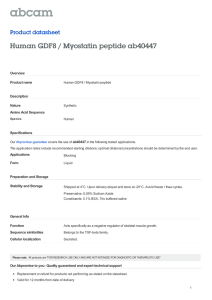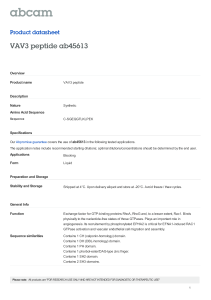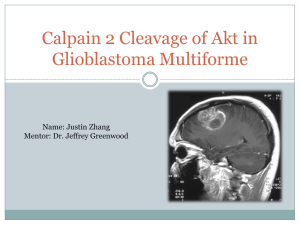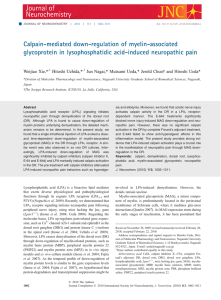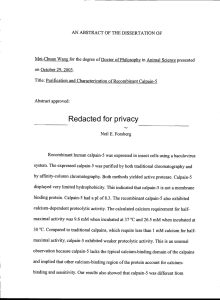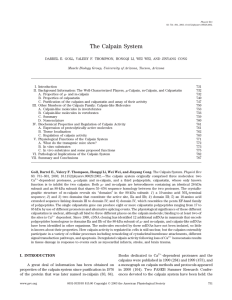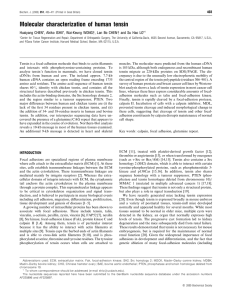Calpain 8 peptide ab41354 Product datasheet Overview Product name
advertisement
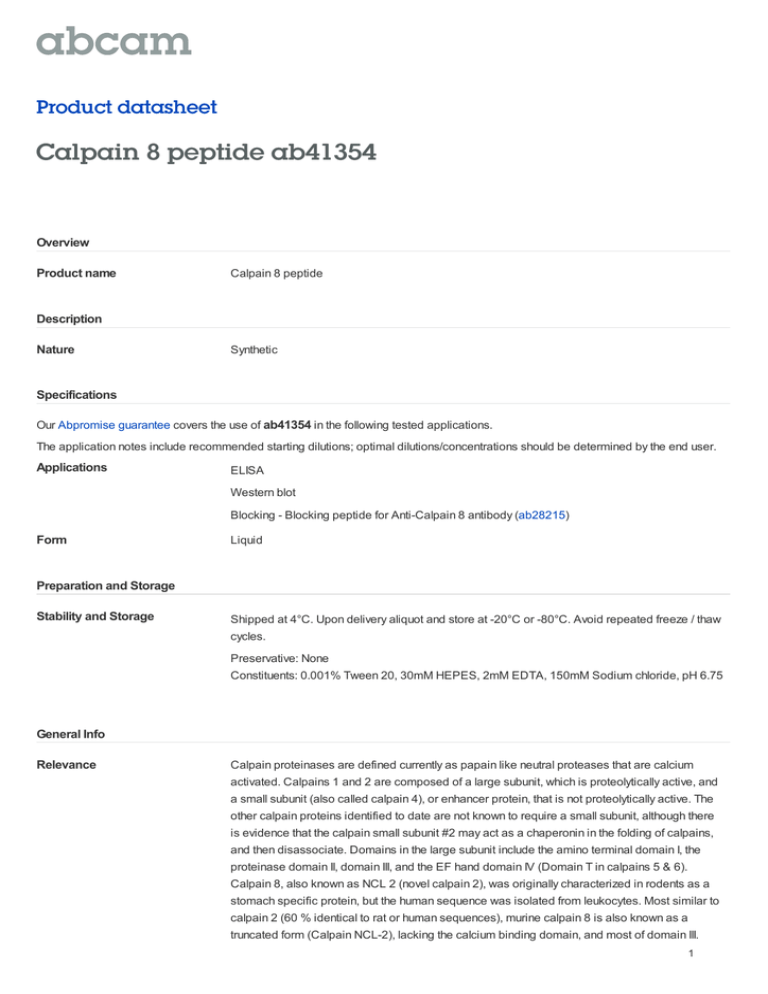
Product datasheet Calpain 8 peptide ab41354 Overview Product name Calpain 8 peptide Description Nature Synthetic Specifications Our Abpromise guarantee covers the use of ab41354 in the following tested applications. The application notes include recommended starting dilutions; optimal dilutions/concentrations should be determined by the end user. Applications ELISA Western blot Blocking - Blocking peptide for Anti-Calpain 8 antibody (ab28215) Form Liquid Preparation and Storage Stability and Storage Shipped at 4°C. Upon delivery aliquot and store at -20°C or -80°C. Avoid repeated freeze / thaw cycles. Preservative: None Constituents: 0.001% Tween 20, 30mM HEPES, 2mM EDTA, 150mM Sodium chloride, pH 6.75 General Info Relevance Calpain proteinases are defined currently as papain like neutral proteases that are calcium activated. Calpains 1 and 2 are composed of a large subunit, which is proteolytically active, and a small subunit (also called calpain 4), or enhancer protein, that is not proteolytically active. The other calpain proteins identified to date are not known to require a small subunit, although there is evidence that the calpain small subunit #2 may act as a chaperonin in the folding of calpains, and then disassociate. Domains in the large subunit include the amino terminal domain I, the proteinase domain II, domain III, and the EF hand domain IV (Domain T in calpains 5 & 6). Calpain 8, also known as NCL 2 (novel calpain 2), was originally characterized in rodents as a stomach specific protein, but the human sequence was isolated from leukocytes. Most similar to calpain 2 (60 % identical to rat or human sequences), murine calpain 8 is also known as a truncated form (Calpain NCL-2), lacking the calcium binding domain, and most of domain III. 1 Homology between human calpain 8 and human calpain 9 (the human stomach specific calpain) is much lower; calpain 9 is more similar to calpain 3. Homology between rat, mouse and human calpain 8 is high. The large subunit of calpain 8 zymogen runs at approximately 80 Kd, and the amino terminal truncation at activation yields an approximately 60 kD form. Cleavage of the carboxyterminal region generates smaller forms of Calpain 8, but it is not clear if these forms are proteolytically active. Cellular localization Intracellular Please note: All products are "FOR RESEARCH USE ONLY AND ARE NOT INTENDED FOR DIAGNOSTIC OR THERAPEUTIC USE" Our Abpromise to you: Quality guaranteed and expert technical support Replacement or refund for products not performing as stated on the datasheet Valid for 12 months from date of delivery Response to your inquiry within 24 hours We provide support in Chinese, English, French, German, Japanese and Spanish Extensive multi-media technical resources to help you We investigate all quality concerns to ensure our products perform to the highest standards If the product does not perform as described on this datasheet, we will offer a refund or replacement. For full details of the Abpromise, please visit http://www.abcam.com/abpromise or contact our technical team. Terms and conditions Guarantee only valid for products bought direct from Abcam or one of our authorized distributors 2
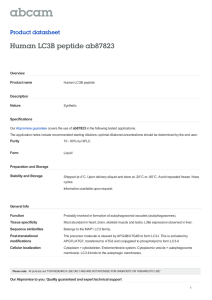
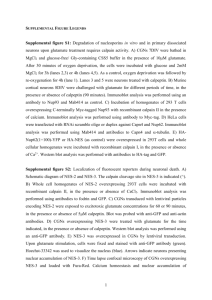
![Anti-Caspase-7 antibody [11E4] ab49733 Product datasheet Overview Product name](http://s2.studylib.net/store/data/012098602_1-ce7fa9622a832730158de0f78e12c560-300x300.png)
